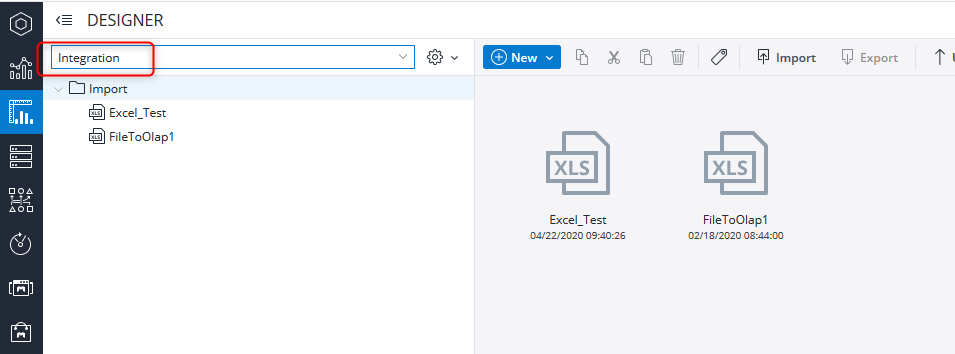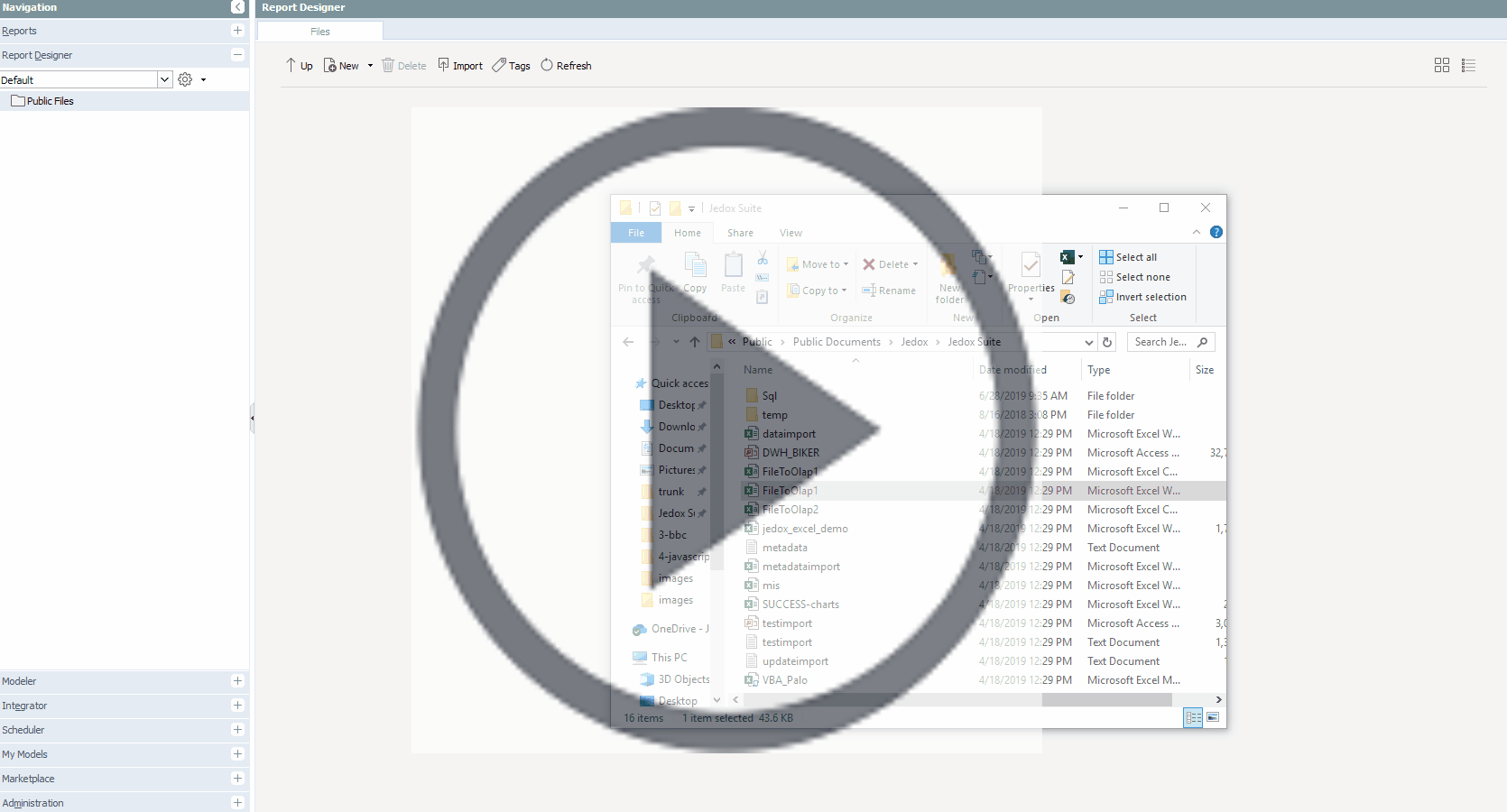Data-driven modeling is an innovative process that enables you to analyze existing data earlier and faster. Instead of creating data cubes manually, data-driven modeling allows you to generate and fill a new Jedox data cube with your existing data in CSV or Excel content. Jedox models the data cube from existing data automatically and intelligently. Additionally, data-driven modeling creates a complete Jedox Integrator (ETL) script that can be further specified and used to populate the data cubes on a periodic basis.
Simply upload data from your ERP, CRM, or other source systems in an Excel file. You can even drag the data file directly into the Designer. Jedox analyzes the structure of the file and automatically creates a database and a project in seconds. Smart, data-driven modeling automatically recognizes dimensions and data types. You can modify the structure of your model using intuitive drag-and-drop functionality.
A data-driven modeling process generates two predefined global subsets *All and *Base for all dimensions.
Note: when using data-driven modeling, a new folder named "Integration" is automatically created in Jedox Web Designer, and source data files are stored inside that folder.
It is also possible to access the data-driven modeling dialog directly from Excel Add-in. Go to the Jedox Ribbon and click on the Data-Driven Modeling button:
Configuration requirements
Jedox Web and Jedox Integrator must be installed. Data-driven modeling is by default set for a maximum file size of 128 MB. This default value can be changed in the file <install_path>\httpd\php\php.ini in the lines post_max_size and upload_max_filesize. To disable the limit, set the post_max_size value to 0.
Rights requirements
A user requires delete (D) rights on the following rights objects: database, cube, dimension, dimension element, cell data, ste_files, ste_etl, and ste_reports.
Next steps:
Updated July 21, 2025

